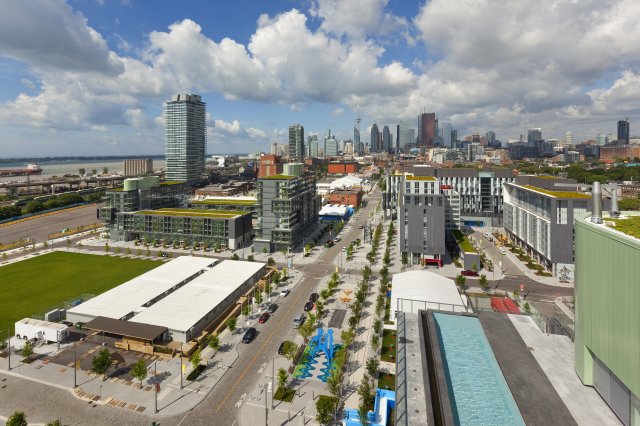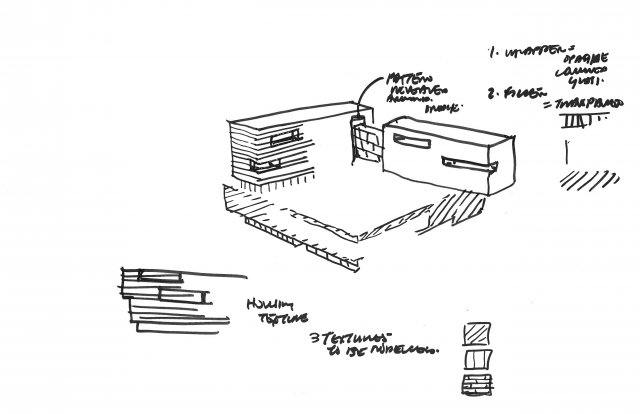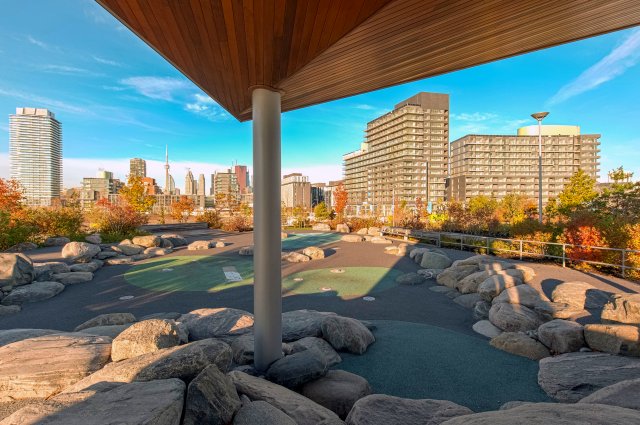After 37 days of incredible athletic and cultural performances, the Toronto 2015 Pan Am / Parapan Am Games have come to an end. The banners that have decorated the Greater Toronto Area are being rolled up, and many of the temporary venues are now being dismantled. The competition venues that will remain are transitioning to legacy mode, whether by reducing seating capacity or removing temporary features. The Athletes Village is no exception, currently undergoing a transformation from the home of athletes, coaches and officials, to the future home of 10,000 Torontonians. In this post of “The Architects behind the Games”, we look at the single biggest built legacy of the Games and Toronto’s newest neighbourhood, the Canary District.
Located between the Distillery District and the banks of the Don River, on the eastern end of Toronto’s downtown core, the Athletes Village will reopen in the spring of 2016 as the Canary District, a new neighbourhood which promises to be new paradigm for Toronto’s future. The neighbourhood is part of the City of Toronto’s 25-year waterfront revitalization process, but was accelerated to serve as the Athletes Village during the Games. As the Canary District, it will be home to 10,000 residents who will live in a LEED Gold targeted community supporting a diverse mix of housing (supportive, affordable, student, and market housing), complimented by retail shops, restaurants cafes, neighbourhood services, and vibrant public spaces (including the new Cooper Koo Family YMCA and the stunning Corktown Commons).

Photo Credit: Tom Arban
Its biggest innovation might be the collaborative spirit that guided the project from design to completion. Instead of appointing a single architect for the entire project, developer DundeeKilmer and project sponsors Infrastructure Ontario and Waterfront Toronto, enlisted four Canadian architectural practices to form the DundeeKilmer integrated design team consisting of Ontario practices
architectsAliance,
KPMB Architects,
MacLennan Jaunkalns Miller Architects and Quebec practice
Daoust Lestage inc. This integrated design team ensured architectural diversity within the projects while bringing together national and international expertise in multi-unit market and affordable housing, community centres, sports facilities, and public open space at a variety of scales. Responding to a Master Plan put in place by Waterfront Toronto, and a Block Plan developed under a prior Planning and Design Compliance process, the architects worked together to create a new model for healthy, sustainable and accessible urban living, expressed through a common language of materials, massing and forms, and a unifying framework of courtyards and mews, pathways and broad public thoroughfares.

To bring coherence to the diversity, the four design teams developed a series of core principles to guide the design of the individual blocks, including material palette, ground floor strategy, massing, and sustainability goals. They share a similar material palette, with brick, stone and wood on lower floors echoing the industrial language of the nearby Distillery District, while the upper floors are composed of glass and steel. This shared material palette recalls the city’s 19th century neighbourhoods, where a shared material and colour palette was the norm because of the use bricks from the Don River quaries. Massing escalates in scale and boldness from building to building, moving from west to east across the site. All buildings are designed to meet LEED Gold Standards, while honouring Toronto’s Green Building Standard, including the integration of green roofs, low-flow fixtures in washrooms, drought-tolerant plants, and bicycle storage and parking. In addition, all blocks face the new boulevard-like extension of Front Street, with their ground floor programmed for services and commercial uses to activate the wide pedestrian zone. All ground floors are uniformly built to 6 metres in height to create a common datum throughout the neighbourhood. Finally, the Canary District features an extensive pedestrian network to allow for a highly walkable neighborhood, interconnecting all the blocks. The architects introduced a secondary system of pedestrian routes that follow the paths of two former CNR rail lines, while all woonerfs, courtyards and paths are linked to create continuous routes across the district.

Photo Credit: Brent Wagler
The new Canary District is an exemplary project where client, developer and architects worked together to bring to fruition a new vision for the city. The DundeeKilmer integrated design team consisting of Ontario practices architectsAliance, KPMB Architects, MacLennan Jaunkalns Miller Architects and Quebec practice Daoust Lestage inc. were able to elevate the vision of Waterfront Toronto, and create a harmonious yet diverse neighbourhood that meets the meets the stringent requirements of the Block Plan without compromising design excellence.